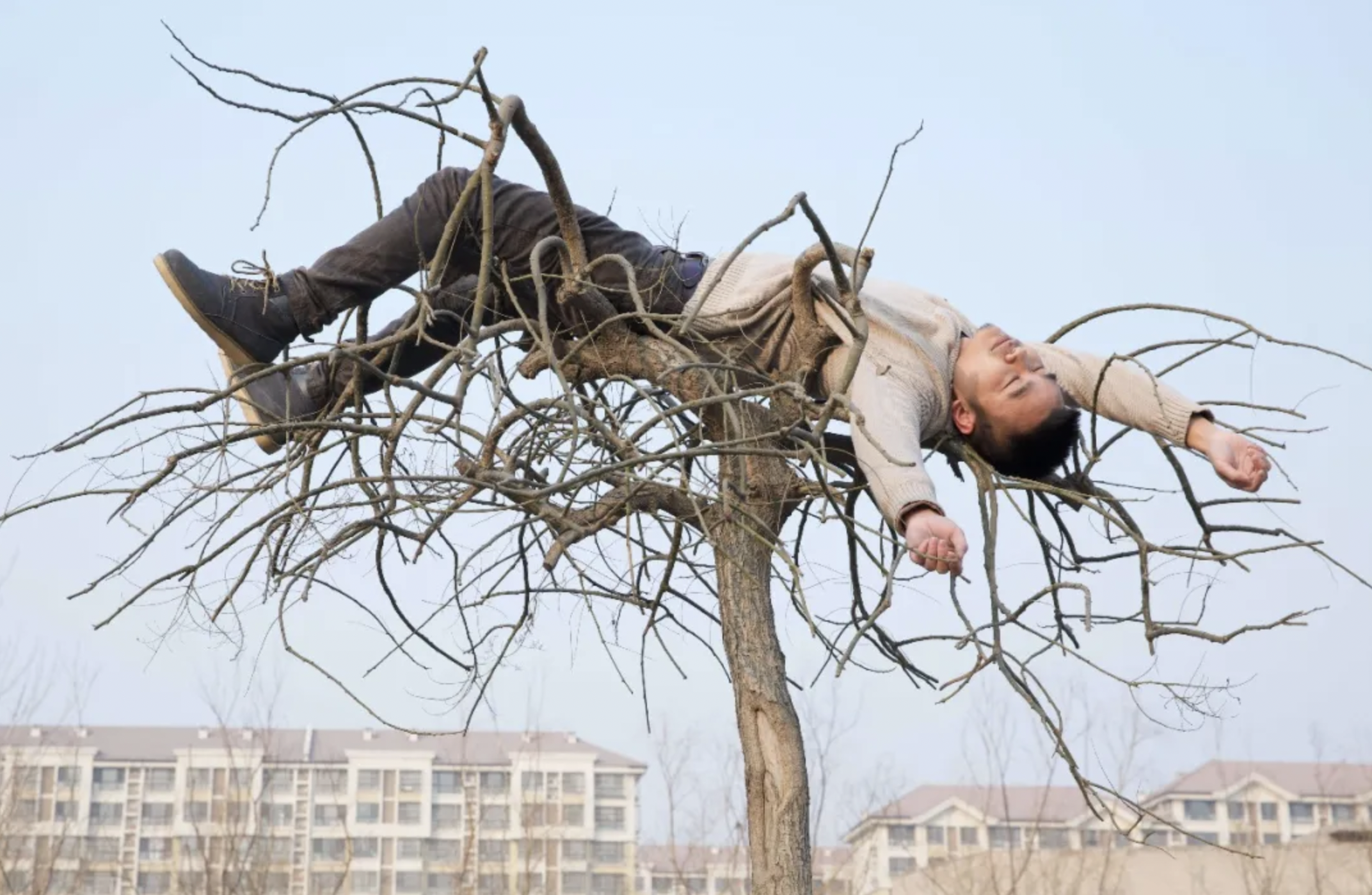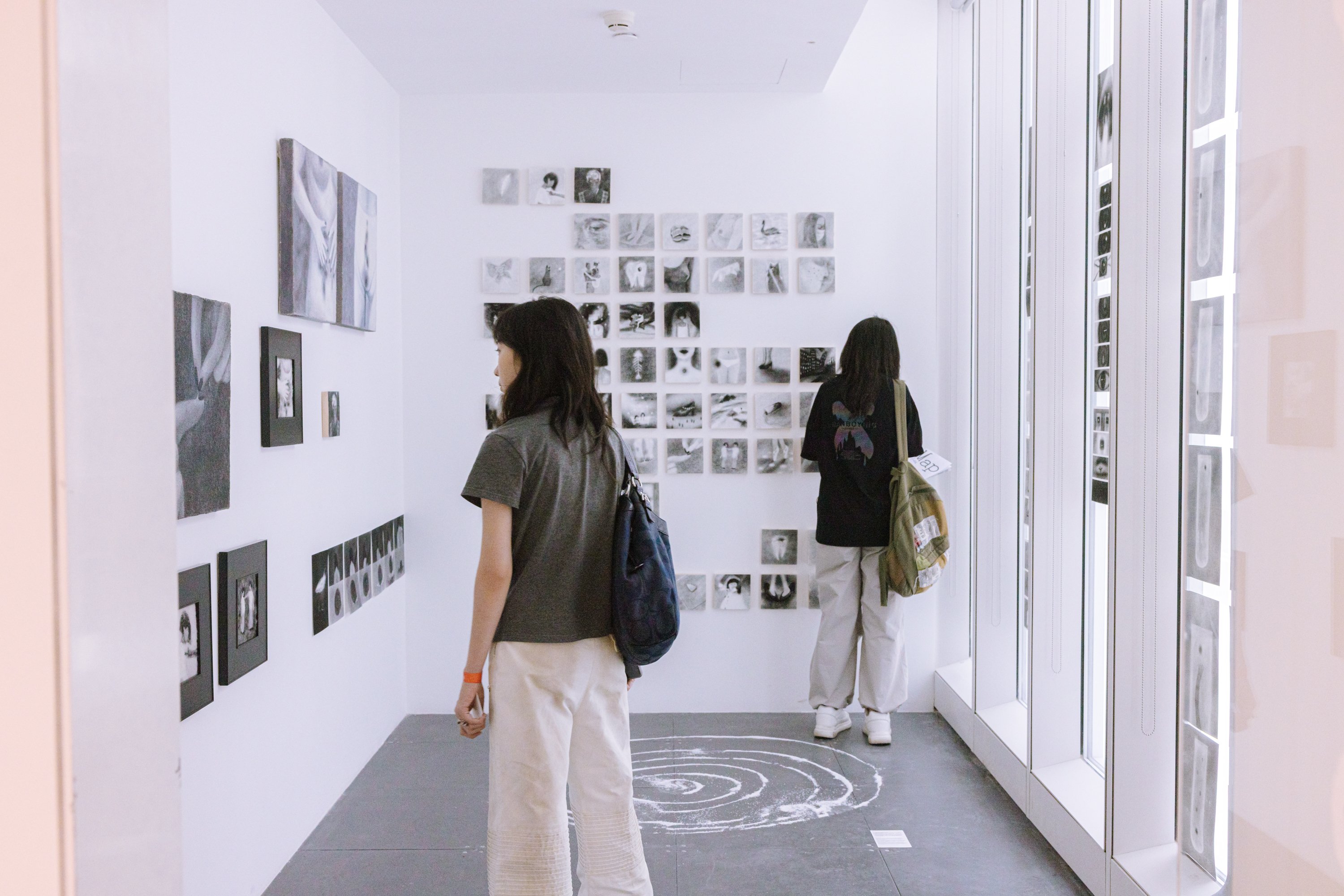Some say it takes a village to raise a child. For artist Shuang Cai, New York City is her village. It’s where the East meets the West, and where she has brought her unique perspective as a Chinese woman to connect with Western art and ideology. Working as an artist and curator with roots in computer science, Cai likes to call herself a creative coder, because her work transcends coding and programming to embody art and its connection to humanity.
Working as the Curatorial Director at LATITUDE Gallery, a leading contemporary art space for emerging artists from the Asian diaspora, Cai always draws inspiration from the people around her, who do not necessarily identify as artists. They can be software programmers like her, graphic designers, non-profit organization staff, and even university professors.
“Galleries like LATITUDE, All Street NYC, bring me to these people who are still passionate about the practice of art,” Cai says. “These places also reflect my multi-layered identity when I practice art.”

One day, in her typical cube-like New York City studio, Cai was cooking dinner with SPAM, a canned mixture of processed pork and ham that was introduced to Asia by American soldiers stationed in the region during World War II. Since then, SPAM has become a staple food in parts of Asia and Oceania, as well as for diaspora communities in the U.S. Cai realized that her life was somehow reminiscent of the canned meat product and its journey: a blend of her Chinese heritage and her experiences living in the U.S.
Reflecting on this, Cai noted, “After the war, the damage remained [in Asia], but people made beautiful recipes out of it.” Inspired, in 2023 she curated a SPAM-themed art hackathon: SPAMtember at All Street Gallery. This art challenge brought together 18 other artists to spend a week producing something extraordinary, culminating in a 24-hour exhibition celebrating the cultural significance of SPAM.
The foundation of Cai’s creative journey can be traced back to her time at LATITUDE. As an undergraduate and a curatorial assistant in 2020, she immersed herself in data manipulation, point clouds, and virtual world building. This environment offered by the gallery, which was founded by artist Shihui Zhou in 2020, provided Cai with a space to experiment with different media and materials, allowing her to push her artistic boundaries and gain invaluable experience.
These days at LATITUDE, Cai takes on a variety of roles. She scouts for emerging talent, writes about artists, even collaborates with them to create pieces for the gallery, enjoying getting to know them along the way. One such artist is Jessica Wee, a Korean-American painter who grew up in Europe.
Cai and Wee hit it off immediately. “I met Jessica Wee when I worked with LATITUDE Gallery to curate a group exhibition called ‘Three-legged Crow’ in mid-2022, and I included two of her works.” Cai recalls that the two selected works were Wee’s experiments painting 3D sketches from the modeling software Blender onto Korean mulberry paper. After that, Cai curated Jessica’s first solo exhibition, “Plusieurs Rêves.”

As Cai delves deeper into physical and technological art forms such as digital fabrication and electronic works, LATITUDE remains her go-to place to connect and elevate other talents, especially fellow Chinese artists.
Recently, Cai collaborated with multidisciplinary graphic designer Ruichao Jiang to curate an exhibition exploring the future of gender roles and reproductive technologies. In the show, they transformed :iidrr gallery into a medical clinic, placing viewers at the center of a social issue: the redefinition of human reproduction through the concept of male pregnancy.
Cai describes her love of art as “almost like an obsession with the connections between technology and human boundaries.” In addition to studying studio art at Bard College as an undergraduate, Cai also chose to major in computer science. Her journey wasn’t easy; she jokes about once scoring a 30 on a math test where the average was 70-80. But that didn’t stop her. Cai says, “I always wanted to be a scientist, and I’m still trying.”
Though Cai doesn’t work in a traditional tech company or a nine-to-five office job, she strives to engage viewers through multi-layered art installations that bring visibility to underrepresented groups.
This dedication was evident in her graduate school thesis exhibition at New York University, where she headed after Bard. For the exhibition, Cai created the Ultimate Vending Machine, “where the product is the process of vending itself.” Proudly presenting it to her teachers, friends, and parents, she explained, “We show you how each item in the machine represents the labor and effort that went into its creation.”
Inside the vending machine were items like a flip-book on creating and assembling a flip-book; a digital GIF player looping the last step of instructions on assembling the digital screen player; a rubber stamp with purchase instructions for the Ultimate Vending Machine; an SD card with all the customizable production files, and a catalog book of all the products.
This may sound like a somewhat unexpected collection of objects, but in Cai’s interpretation, they all represent the invisible labor that is behind a product, a meal, or a service to society, yet lacks its own representation. In this single piece, she blended her cultural heritage with her artistic and technological pursuits.
“I see the Ultimate Vending Machine as a way to spotlight the often-overlooked labor behind everyday transactions.” Cai explains. She reflects that throughout the process, she built connections with a whole community, relying on their support and then revealing those contributions within the artwork. “It is a testament to the collective effort and help I received, honoring the collaborative spirit behind its creation.”
Banner image shows installation view of “Three-legged Crow,” curated by Shuang Cai at LATITUDE Gallery. Image via LATITUDE Gallery WeChat.

















